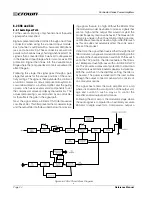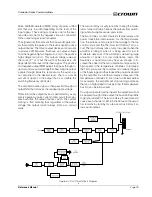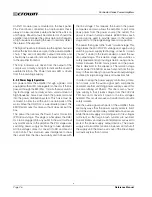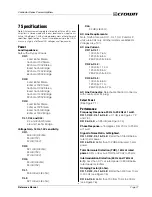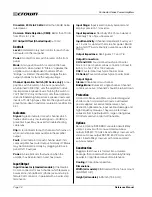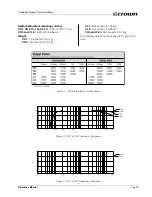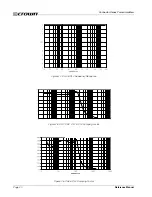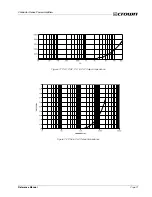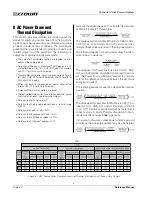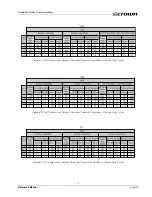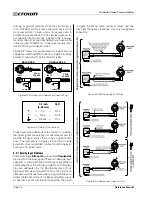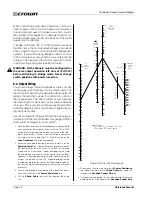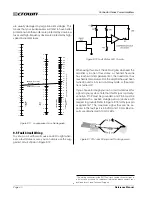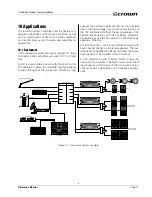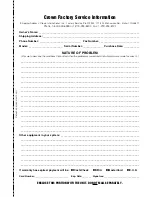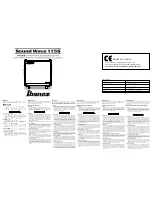
Page 37
Contractor Series Power Amplifiers
Reference Manual
4 kHz
10 kHz
40 kHz
100 kHz
Frequency
dB
0
–10
–20
A
B
C
6 dB/octave
12 dB/octave
To
Amp
GND
To
Amp
GND
To
Amp
GND
Source
1.8 K
Ω
.003
f
µ
.015
f
µ
.018
f
µ
3.9 mH
5 mH
600
Source
Ω
R
600
Source
Ω
R
A
C
B
Note: A low source impedance (R) can be
increased to 600 by an appropriate resistor.
Ω
Figure 9.7 Unbalanced RFI Filters
1 Hz
10 Hz
100 Hz
1 kHz
10 kHz
dB
0
–5
–10
–15
1 f
µ
.1 f
µ
.05 f
.01 f
µ
µ
Frequency
Figure 9.6 Infrasonic Filter Capacitor Values
For balanced input wiring, use an example from Figure
9.8. Filters A, B, and C correspond to the unbalanced
filters A, B, and C shown in Figure 9.7.
Another problem to avoid is
hum
. The two most com-
mon sources of hum in an audio system are
inductive
coupling
and
ground loops
.
Inductive coupling can occur when input cables are
subjected to a magnetic field from a power cord or
power transformer. One way to prevent inductive cou-
pling is to lace the input cables together along their
length and route them as far away as possible from
power transformers and power cords. The use of
shielded pair cable is another effective way to reduce
or eliminate hum resulting from inductive coupling.
Sometimes large levels of
radio frequencies
or RF are
present in the input signal. Although high RF levels may
not pose a threat to the amplifier, they can burn out
tweeters or other loads that are sensitive to high fre-
quencies. Extremely high RF levels can also cause your
amplifier to prematurely activate its protection circuitry,
resulting in inefficient operation. RF can be introduced
into a signal by local radio stations and from the bias
signal of many tape recorders. To prevent high levels of
input RF, install an appropriate low-pass filter in series
with the input signal. Some examples of unbalanced
wiring for low-pass filters are shown in Figure 9.7.
+
–
Balanced In
910
Ω
.003
f
µ
.015
f
µ
.018
f
µ
1.8 mH
2.5 mH
A
C
B
.015
f
µ
1.8 mH
D
Balanced Out
+
–
910
Ω
1.8 mH
2.5 mH
1.8 mH
+
–
Balanced In
Balanced Out
+
–
+
–
Balanced In
Balanced Out
+
–
+
–
Balanced In
Balanced Out
+
–
0.47 Film
0.47 Film
Figure 9.8 Balanced RFI Filters
Ground loops often result when two or more devices
are improperly grounded. This causes undesirable
stray currents that may produce hum in the output. The
best way to avoid ground loops is to ensure that all sys-
tem devices are plugged into the same power strip. In
addition, make sure that all cable shields are grounded
at one end only.
Input and output grounds are sometimes tied together
for testing or metering. This can cause
feedback oscil-
lation
from load current in the test loop. In some sys-
tems, even the AC power line may provide this
feedback path. To avoid this problem, use proper
grounding, isolate the inputs and other common AC
devices.
9.3 More About Output Modes
9.3.1 4/8 ohm Operation (CH and CL Series)
4/8 ohm operation is commonly used to drive loud-
speakers with impedances from 2 to 16 ohms. When
using 4/8 ohm operation, appropriate load impedances
will depend on the Stereo/Bridge mode you select, as
well as the model of Contractor Series amplifier used.
CH Series models are rated to drive loads from 4 to 8
ohms in Stereo mode, and from 8 to 16 ohms in Bridge
mode. CL Series models are rated to drive loads from 2
to 8 ohms in Stereo mode, and from 4 to 16 ohms in
Bridge mode.
9.3.2 70V and 100V Operation (CH Series Only)
70V and 100V output operation is used to drive con-
stant voltage lines without external step-up transform-
ers.


